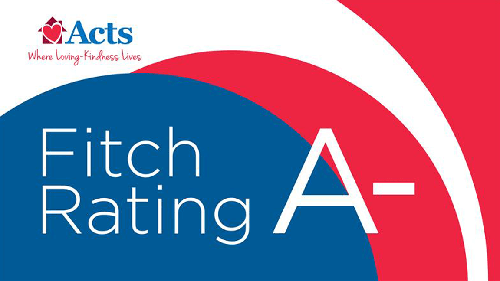Downsizing for Retirement: 9 Downsizing Tips for Seniors
Many people choose to downsize for retirement. Now that the kids are grown and you simply don’t need as much space, downsizing is a great way to boost your retirement fund and make your living situation more comfortable – which is why this process is sometimes called “rightsizing for seniors.” When you rightsize your home, you get rid of the extra space you don’t need to make way for a new living space at a new budget that allows you the budget and time to better live your dream retirement.
However, it’s difficult to know how to downsize your home for retirement, since it can feel like an overwhelming task. Consult our expert tips for seniors selling their homes to rightsize their life below.
Downsizing Tips for Seniors

1. Start Early
Initiate the downsizing process well in advance to reduce stress and make thoughtful decisions. Take your time, ideally over several months, to ensure a smooth transition. Rushing through the process can lead to added stress and hasty decision-making. Instead, embrace the opportunity to reminisce and enjoy the process of downsizing for retirement, making it a pleasant journey rather than a stressful one. Downsizing for retirement can certainly be exciting, but also consider that you surely have a great number of possessions you no longer need, and it will take time to go through it all. Stop and enjoy the process of reflection before selling, donating or throwing away the items. Perhaps you even want to take photos to keep the memory without the item.
The earlier you begin, the more time you’ll have to adjust to the idea of letting go of unnecessary possessions and simplifying your life.
2. Define Clear Goals
Why are you downsizing? Whether your goal is to save money, simplify your lifestyle, or relocate to a new area, it’s important to set clear financial goals. Envision your desired retirement lifestyle, considering potential healthcare expenses and other future financial needs. By doing so, you can better understand your anticipated costs and how to achieve them while planning for retirement.
3. Create an Inventory of Your Belongings
One of the most useful tips for seniors selling their homes to downsize is to meticulously catalog your possessions. By doing so, you gain a better understanding of what you own and can make informed decisions about what to keep and what to let go of during the downsizing process. Create a list of all your possessions, including items tucked away in the attic, basement, or storage units to reveal the extent of your belongings. Identify duplicate items and choose the one in the best condition. Certain online tools and programs can help in making this process easier. Also identify items that won’t be needed in your new home (for example a lawn mower rendered unnecessary by a move to 55+ area or retirement community that handles lawn care for you), and consider selling or donating them.
4. Measure Your New Living Space
Acts recommends anyone considering downsizing for retirement understand the dimensions of their new living space to determine how much of their belongings they’ll be able to bring. Visit your future home or assess online floor plans of potential options and consider the available space. Note any storage spaces like cabinets for kitchen appliances and closets for clothing. Start outlining which possessions will fit comfortably in your new living area. By understanding the layout and dimensions of your new home, you can make informed decisions about what items to bring with you and how to best arrange them in your smaller living space.
5. Organize Your Belongings
You can make the process of downsizing more efficient and less complicated with these organization strategies:
- Categorize: Sort your belongings into categories to bring structure to the downsizing process.
- Ask Yes or No Questions: Instead of vague, open-ended questions, use clear, binary queries like “have I worm this coat in the last year, and will I in the future?” to simplify decision making.
- Three-Box Method: Employ a “Yes, No, Maybe” system within three marked boxes and categorize your belongings into these straightforward options. Keep the “Maybe” box minimal.
- 6-Month Method: For items unused in the past six months, consider donating or reselling them. Chances are, if you haven’t used them recently, they may not be essential in your future life.
- Hanger Method: Turn hangers backward and set a time limit of around 6 months to a year. Clothes that remain backward haven’t been worn and can be confidently discarded, simplifying closet downsizing.

6. Start Decluttering Your Home
Efficiently declutter your possessions by adopting a purposeful approach. By following these decluttering strategies, you can downsize your belongings while ensuring that your new retirement space is filled with items that truly enhance your life.
Tips for Decluttering Your Home:
- Sell Unneeded and Valuable Items: Consider selling items you no longer require, especially if you’re moving to a smaller home. Identify marketable items like designer handbags or artwork and explore platforms like eBay, Craigslist, or Facebook Marketplace. This can provide quick cash for your move.
- Dispose of Broken Items: Throw away broken items immediately, ensuring that only the best-quality possessions accompany you into retirement.
- Donate: Items that you can’t sell can find new homes through donations to friends, family, or charitable organizations. You may be surprised how cathartic it feels to know a beloved but no-longer-needed item will make a new owner extremely happy.
- Digitize Important Documents: Reduce paper clutter by discarding as many unnecessary papers as possible. Scan and store essential documents digitally to save physical space while ensuring easy access when needed.
- Give Gifts Now: Give away gifts you’ve been saving for scheduled occasions. It’s a simple way to declutter while spreading joy year-round.
- Keep Sentimental Items: Family heirlooms, photographs, and other cherished possessions should be thoughtfully preserved to ensure that meaningful memories are retained. Would any of your loved ones appreciate the opportunity to own any of these items?
- Keep Useful Items: In addition to sentimental items, assess each item’s utility and beauty. Keep only those possessions that truly enhance your life, such as essential household items or possessions that spark joy. Really truly view now as the opportunity to declutter.
- Borrow or Rent Items You Rarely Need: If you rarely use something, consider if you truly need to own it. You may borrow or rent items as needed rather than keep rarely used possessions.
- Limit Collections: Be selective with collections, such as books, greeting cards, crystal, or memorabilia. Keep only what fits within the designated space.
- Antique Furniture: If sentimental antique furniture doesn’t align with your style, consider photographing it for memories and donating it to a worthy cause.
- Closet Discipline: Maintain a wardrobe limit to avoid accumulating excessive clothing. When adding new items, remove an item of the same category.
- Bathroom Efficiency: Keep only daily essentials in the bathroom and use baskets for easy access and storage. Discard old or unused toiletries.
This is one of the most stressful downsizing tasks. A helpful downsizing tip for seniors is to embrace change, and to assess your belongings objectively and separate from emotions. Consider whether keeping something aligns with your happiness. Some suggest creating a ceremonial farewell to items you’re parting with, offering a sense of control and respect for each possession. This can provide reassurance later if you have doubts.
7. Use Storage Solutions in Your New Home
Maximize the use of space in your new home by being strategic with storage solutions to efficiently organize your belongings and make the most of the available space in your downsized home.
Storage Ideas for Organizing Your Home:
- Shelves and Cabinets: Consider whether you can enhance existing storage areas by adding shelves and cabinets and utilizing the inside of cabinet doors for hanging.
- Multi-Functional Furniture: Choose furniture pieces that serve multiple purposes. For instance, a single table can function as a coffee table, workspace, and dining table. Look for desks that can be closed to conceal workspaces when not in use. Ottomans can serve as storage, extra seating, or even a coffee table.
- Hall Organizers: Install a hall organizer at the front door with designated bins for keys, bags, coats, and shoes to maintain a clutter-free entrance.
- Convertible Seating: Consider sofas and chairs that can be converted into sleeper beds to accommodate guests in the absence of a dedicated guest room.
- Storage Containers: Choose square or rectangle storage containers. Wicker baskets are both attractive and versatile, suitable for sliding under items and stacking on shelves.
8. Get Support
To ensure a successful transition, consider reaching out for support to the following people for help or guidance:
- Real Estate Agents: Get an objective assessment of your property’s value based on comparable sales in the area, which will enable you to make informed financial decisions.
- Professional Moving Services: Explore moving companies that specialize in downsizing and relocation.
- Professional Downsizing Experts: These professionals provide customized advice and strategies for a smoother transition, which can be invaluable in making the downsizing process less stressful.
- Friends and Family: Enlist the support of friends and family to assist with downsizing. Their help can make the process more manageable and less overwhelming. A great option is to have friends help sort through items to determine what’s worth selling, donating, and tracking — and in the process determining which of the items they want to keep themselves!
9. Maintain a Positive and Patient Mindset
Learning how to downsize your home for retirement can be a process that takes time and effort, but with the right mindset, you can navigate it successfully. As you embark on the journey of downsizing for retirement, remember to cultivate a positive attitude and exercise patience with yourself. Understand that it may not be easy, but letting go of things can bring a sense of liberation. Embrace the process by focusing on the benefits it will bring to your lifestyle. Be patient, and recognize that downsizing takes time, and it’s okay to progress at your own pace. Allow yourself the patience to navigate the emotional challenges associated with letting go of belongings.
With a positive mindset, you can tackle downsizing with greater resilience and a sense of accomplishment as you transition to a simpler retirement life.
If you decided to wait until after you retire to downsize, your situation is slightly different. See the advice below for more information:
- Think About Where You Would Like to Retire: Now that you’re not tethered to your jobs and you are no longer raising a family, you have plenty of options regarding where you can retire. While many retirees choose somewhere warm like Florida, the Sunshine State may not be for everyone. Figuring out where you want to retire can help you in the sale of your current home and in understanding the cost of moving to a new state.
- Figure Out What Living Situation Best Matches Your Lifestyle: If you know what you would like to do in retirement and what needs you may have in the future, you can start determining what works best for your situation. Would a retirement community with frequent activities and excursions suit your preferences? Should you rent a condominium or small apartment? Move in with loved ones? Will you want somewhere that provides medical services as you age?
- Sell Items You No Longer Need: Since you’ll likely be moving to a smaller home, you should consider selling items you no longer need. This is a great way to get some quick cash to put toward your eventual move. Please note that for any items you can’t sell, you may want to give them to friends and family or donate them.
At What Age Do Most Seniors Downsize?
There is no “right” age to downsize, since it all depends on individual situations and lifestyle choices. Generally, studies have shown that people start considering downsizing around their late 50s to early 60s. According to a Consumer Housing Trends Report, most seniors downsize at 55-years-old. For many, downsizing becomes an option once children have left the home.
Interested in learning more tips about downsizing or the benefits of moving to a retirement a community? See our resources below. Or you can get pricing information on one of our retirement communities throughout the Eastern United States.
Got More Questions about Downsizing for Retirement? Search Additional Resources:
- Should You Downsize Your Home at Retirement? Pros and Cons.
- How Can Downsizing Benefit Your Health and Your Finances?
- When Should Seniors Sell Their Homes?
- Hidden Costs of Home Ownership
- 5 Must-Ask Questions for Baby Boomers Facing Retirement
- Getting Ready for Retirement Checklist
- How to Move
- Should I Sell My House When I Retire?
- Average Cost of Retirement Communities




